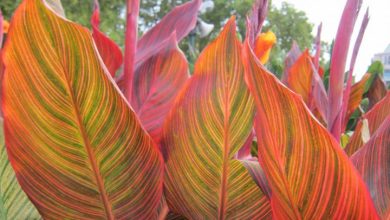Jasminum officinale: [Cultivation, Care, Pests and Diseases]
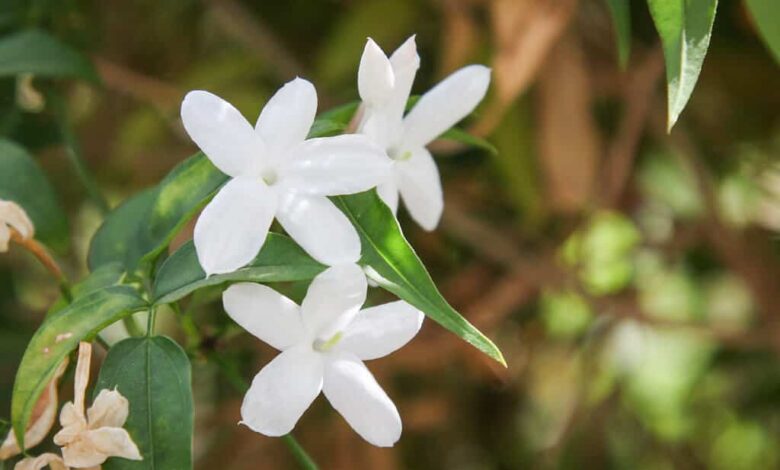
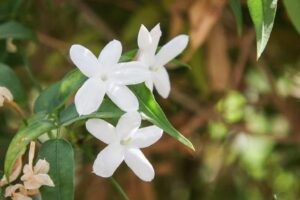 When? In late winter or early spring it is best to sow, transplant and multiply the plant.
When? In late winter or early spring it is best to sow, transplant and multiply the plant.- Where? In gardens as an ornamental plant, it is a perfect cover for walls, pergolas and gazebos.
- How do we prepare the land? It adapts to many soils outdoors and in a pot, auniversal substrate with 30% perlitewill suffice, so that the irrigation water drains very well.
- How do we sow? In pots and on the edge of walls in gardens, so that it expands freely.
- How do we pay? Use organic fertilizers in spring like manure or guano.
- When do they bloom? In spring, its aromatic flowers sprout grouped in white inflorescences.
- Ideal temperature? It is resistant to cold but does not support very strong frosts.
- How do we water? Two to three times a week in summer and four to five times the rest of the year each week is ideal.
- Diseases and pests? They attack mealybugs, weevils, berrenillos and Piral del jasmine , among others.
What is Jasminum officinale?
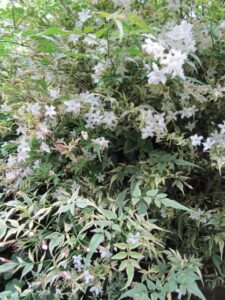 Jasminum officinale belongs to the oleaceae family , which has about 200 species under the common name of Jasmine.
Jasminum officinale belongs to the oleaceae family , which has about 200 species under the common name of Jasmine.
Its origin is located in the European continent, North Africa and the eastern part of Asia, where it covers many areas of the Himalayas, India and China.
Other common names are summer jasmine, common jasmine, jasmine, and Moorish jasmine. In Pakistan it is included in the shrub crown of the official shield, because it is the official plant .
It is considered an evergreen climbing plant , with woody stems that can reach up to 6 meters in height. It is highly branched, it has pinnate and opposite dark green leaves, integrated into up to 3 acute leaflets and a larger terminal one, all with entire edges.
Famous for its healing properties, Jasminum officinale is an antiseptic, germicidal, and anti-inflammatory. It is revered as «the perfume of love» in many cultures, where aphrodisiac properties are attributed to it thanks to its delicate aroma, which grants intimacy, confidence and relaxation.
It has a very expensive essential oil extracted from its flowers, widely used in the pharmaceutical, cosmetic and aromatherapy industries.
Jasmine infusion is also very famous around the world, in combination with green tea, an Asian custom that reports various health benefits, as a calming effect that relaxes and mitigates headaches and eliminates imbalances caused by stress.
It is also attributed with great beneficial effects in the fight against cancer, it is a good cholesterol and fat reducer in the body and also mitigates the spread of colds and flu, thanks to its antibacterial and antiviral properties.
Where should we sow it?
It also thrives as a houseplant and the cut flower lasts for about 24 hours.
When should Jasminum officinale be grown?
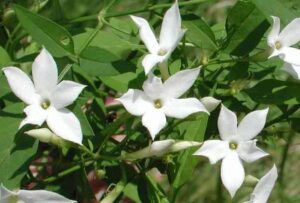 It is advisable to multiply by cuttings in spring (mid) and early autumn, in warm-semi-temperate climates.
It is advisable to multiply by cuttings in spring (mid) and early autumn, in warm-semi-temperate climates.
In early spring, sowing will work as long as winter temperatures dissipate enough to allow temperatures to rise.
This allows the plant to be transplanted from a pot to the garden and cutting techniques applied to multiply it.
How do we prepare the land?
In pots, its cultivation requires a universal substrate that contains 30% perlite, in order to guarantee the best possible drainage.
How to sow a Jasminum officinale step by step?
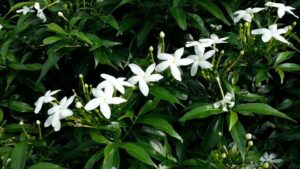 Enumerating the way to cultivate it helps a lot to skillfully handle the art of sowing and multiplying this plant of varied medicinal benefits .
Enumerating the way to cultivate it helps a lot to skillfully handle the art of sowing and multiplying this plant of varied medicinal benefits .
The technique of multiplication by cuttings , which are made of semi-woody wood with leaves, usually gives very good results . Let’s see step by step, how to sow and multiply the common Jasmine.
By cuttings
- Cut a healthy cutting with the gardening scissors diagonally, remove the excess leaves, leave very few (2 only) so that they do not rob you of energy. Impregnate the tip with a homemade rooting agent, or also hormones in liquid form. Although in powder it is better preserved.
- The pot should contain a good organic substrate with vermiculite. It also results in a mixture of mulch or peat with washed river sand, at 50%.
- Plant the cutting bottom side down to respect polarity.
- In about two to three weeks, roots will begin to sprout.
- Water and place in a semi-shady place, with good indirect light.
- At the end of the following fall , the rooted cuttings will be taken to the bed of a nursery and also planted in individual pots until the final planting proceeds.
What care do you need?
It is not very difficult to have the blessing of growing a beautiful Jasmine at home. They are noble plants that give us many benefits, in exchange for little care. Let’s see how to always keep them beautiful and healthy.
illumination
Fits in open spaces with good natural light, such as gardens, in full sun and in partial shade.
Temperature
As they come from tropical and subtropical climates , they do not support much frost even though they are quite resistant to cold.
Irrigation
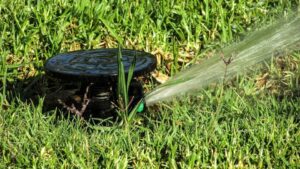 The requests should be moderate but constant. Especially in the summer or hot season, to prevent the plant from dehydrating.
The requests should be moderate but constant. Especially in the summer or hot season, to prevent the plant from dehydrating.
About two to three times a week, it is sufficient in summer and perhaps a little more if it lives in a pot. The rest of the year, it will be enough to water it every 4 to 5 days.
The technique of the saucer full of water under the pot is good for you, but only for about ten minutes a day, after having received the day’s watering in moderation.
Pass
A good organic fertilizer such as manure or guano , is ideal to take care of the flowering of this famous climber. But it is advisable to apply it in liquid form if the plant lives in a pot, so that the drainage remains optimal.
Pruning
It is highly recommended to take advantage of the winter to eliminate leaves, dry and weak branches, as well as those that intersect to make the foliage look ugly.
What pests and diseases attack Jasminum officinale?
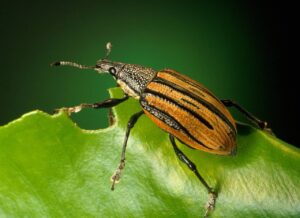 A terrible plague for Jasmine are Berrenillos or larvae of the Hylesinus , insects able to build galleries in the bark and wood of the plant.
A terrible plague for Jasmine are Berrenillos or larvae of the Hylesinus , insects able to build galleries in the bark and wood of the plant.
The holes reveal the adult specimens. When that happens, an effective larval insecticide needs to be applied urgently.
Another pest that frequents it is the cochineal , of the cottony type and the limpet version, which stick to the leaves to feed on the cells. Fighting them can be tedious. It is best to attack them with the help of neem oil .
Other unwanted visits are those of weevils , the borer of the trunk and the Piral of the jasmine.

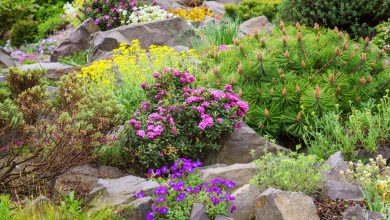
![Photo of Continental Climate: [Characteristics, Flora, Fauna and Adaptability]](https://www.complete-gardening.com/wp-content/uploads/2022/08/continental-climate-characteristics-flora-fauna-and-adaptability-390x220.jpg)
![Photo of Syringa Vulgaris: [Cultivation, Care, Pests and Diseases]](https://www.complete-gardening.com/wp-content/uploads/2021/06/Syringa-Vulgaris-390x220.jpg)
